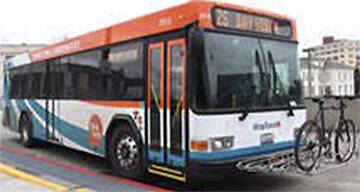Bainbridge city staff has been combining transportation plans to reduce redundancy and change to a non-motorized focus for the updated Comprehensive Plan.
But the City Council has heard from residents that they want to have input, and members voiced that at their Oct. 15 meeting.
Councilmember Jon Quitslund is worried about “how much work is out in the open.” He said the community knows the integration of the plans is a big deal, and it is already engaged. But like the council, the planning commission really hasn’t been involved.
Mayor Joe Deets said they “are hearing from constituents that they don’t feel safe.” He added residents want to know how “this is going to make my life on Bainbridge better.”
Councilmember Kirsten Hytopoulos said staff is making policy decisions that council should be making. Councilmember Leslie Schneider said the city needs to listen to all rather than just “hear more from the loudest voices.” Deputy mayor Ashley Mathews said the public needs to be involved to create one vision. She said the two plans have different goals and priorities.
Public Works director Chris Wierzbicki said it’s not really changes but a merger. “We’re not creating too much new content here.” Asked about a circulator bus for downtown, he said it’s already in one of the plans so it “will be in the new one.”
Councilmembers had requests for staff.
Schneider wants to see the reasoning behind the decisions. She wants a breakdown on what the levels of service will be on which roads. She also wants to know what the most dangerous roads are in terms of fatalities and injuries the past 10 years. Quitslund wants to know about the trails system. “We have a range of community needs,” he said.
Councilmembers said they would like to have copies of the Island-wide Transportation Plan of 2017 and the Sustainable Transportation Plan of 2022 so they can see the changes.
Councilmember Brenda Fantroy-Johnson said she wants it to be clear what came from which plan. She wants to make sure council sees it before it’s finalized so it can see if staff “captured the spirit” of what’s wanted.
Wierzbicki said the merger of the plans will “provide a more consistent approach.” He also said the new combined plan will have “a lot of flexibility” and in no way is a final decision.” He also said staff will provide a summary of any significant changes.
Deets summed up what the merger of the documents will mean. “It will make us more efficient.”
A city memo says merging documents will lead to a proactive approach to long-range and development-related transportation planning; remove obligations to mitigate solely for auto delays; and more. An example is in regard to Levels of Service at intersections, ranging from free flow conditions with low density to over capacity with extreme delays. Other examples include pedestrian and bicycle standards.
The council will check if the city is taking action to build projects and implement programs “concurrent” with planned growth. An example is if the city implements projects to expand roadway capacity and mitigate intersection delays. If the city’s plan is “concurrent” then development is allowed except when development impacts need to be mitigated.
The Department of Commerce gives guidance on Transportation Equity to identify racial and social equity when implementing improvements, programs and services. The goal is to provide accessible and affordable transportation for all, especially historically underserved populations.



